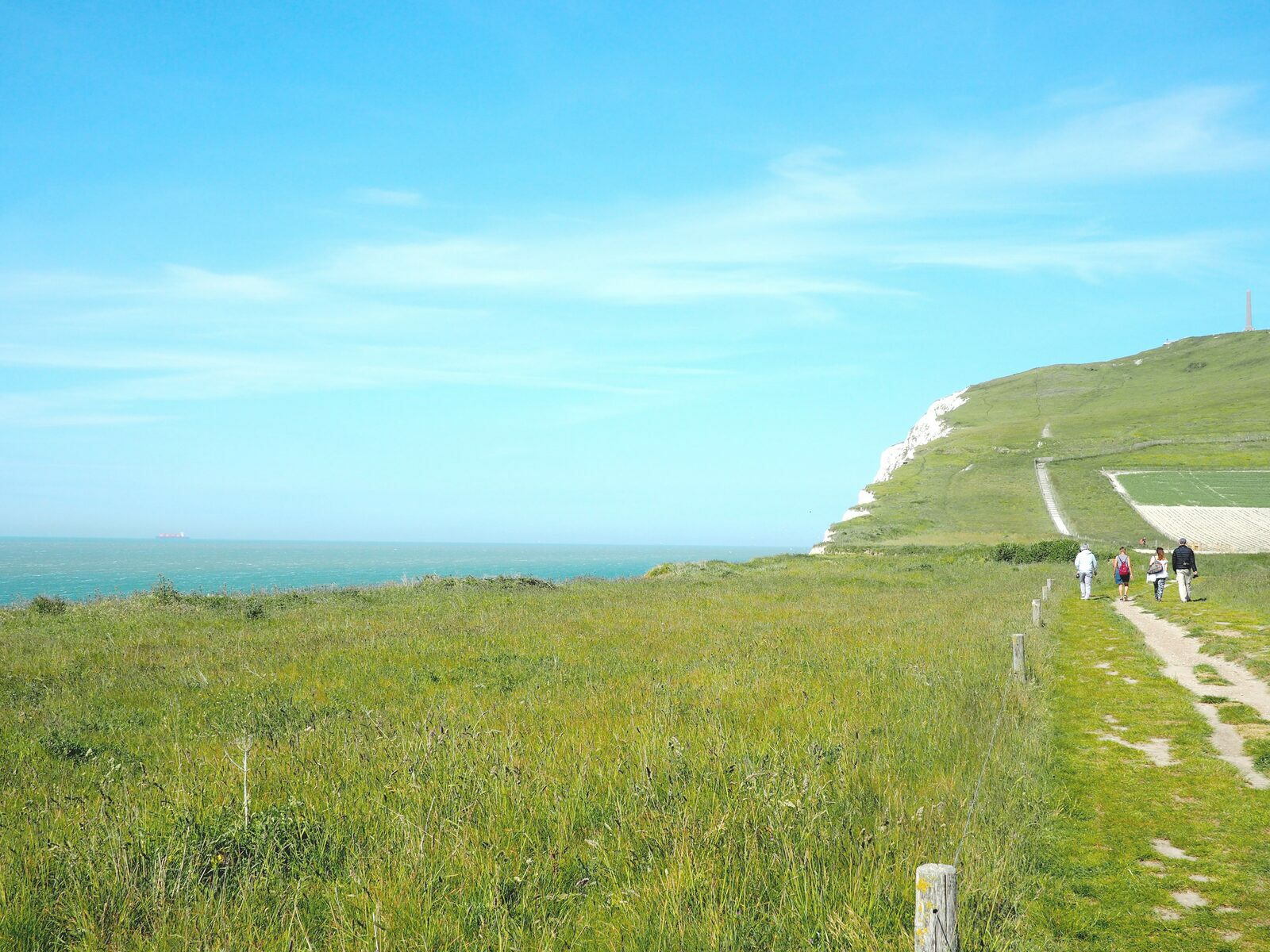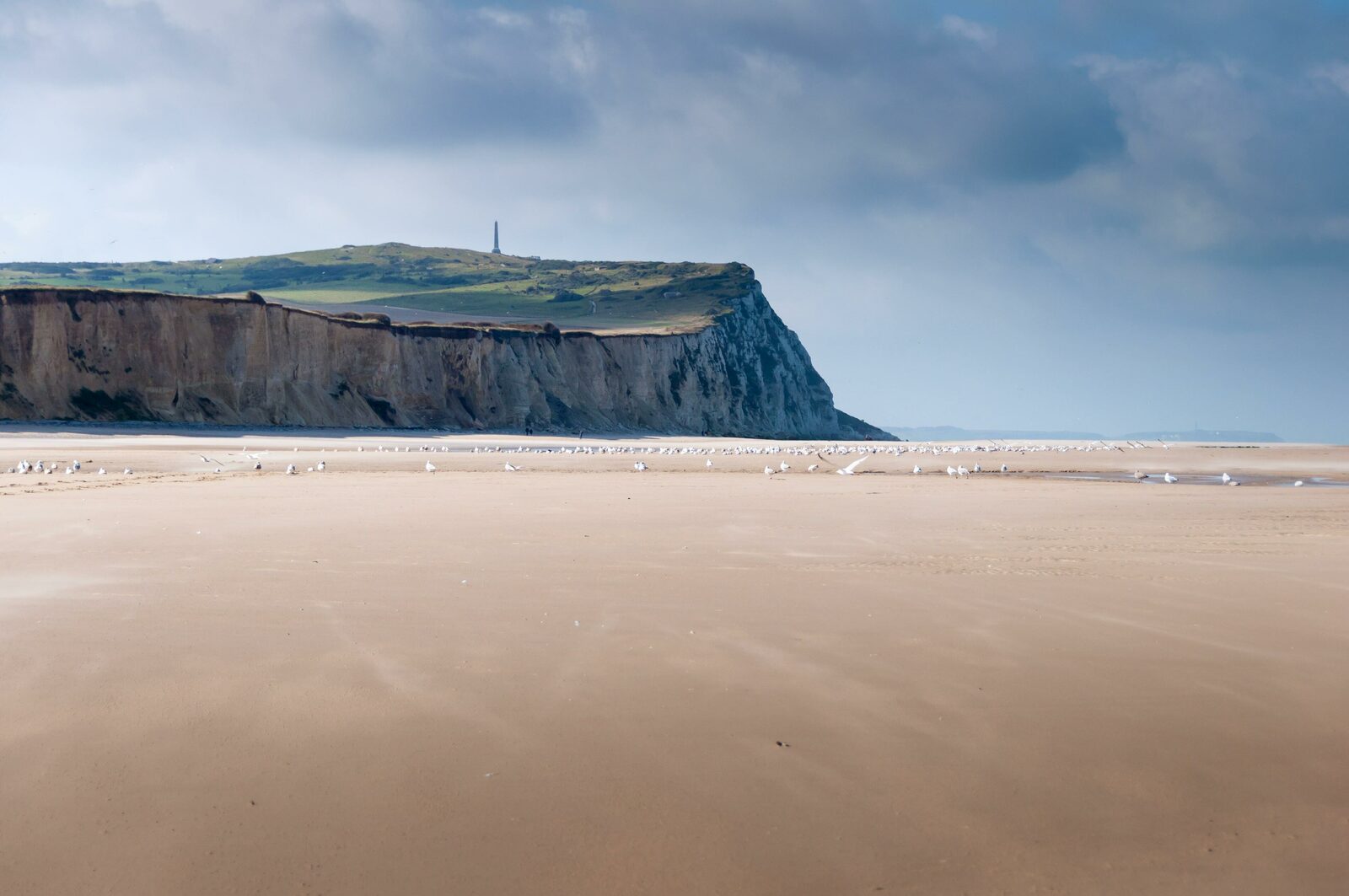
Cap Blanc Nez & Cap Gris Nez: emblematic sites on the Opal Coast
The Grand Site des 2 Caps nature reserve is a spectacular spot on the Côte d'Opale. Situated in the Strait of Calais, it is a popular destination for walkers and tourists in search of beautiful scenery. On one side you'll find Cap Blanc Nez, offering a spectacular panorama at an altitude of 134 metres. From its white chalk cliffs, you can admire the Channel and even the English coastline, weather permitting. On the other side, Cap Gris Nez is the closest point to England. It's an even wilder spot, making it ideal for observing the surrounding nature, migratory birds and ferries travelling between France and the UK.
What to see and do when you visit Cap Blanc Nez and Cap Gris Nez?

The lookout point at Cap Blanc Nez
Exceptional viewpoint, easily accessible

Escalles beach
Surrounded by sea and cliffs

The 2 Capes trail (GR120)
16km walk linking the 2 Capes
Walks along the coast of the Strait of Calais
The Strait of Calais, where Cap Blanc Nez and Cap Gris Nez are located, is one of the favourite spots for tourists visiting the Côte d'Opale. In 2011, this part of the coast was even recognised as a nature reserve for the beauty of its landscapes. That's why the Strait of Calais is so popular with walkers.
There are many signposted trails, so you'll be able to find a walk to suit you and your family. There are loops of several dozen kilometres as well as short walks more easily accessible to all.
There are plenty of starting points in the villages of Ambleteuse, Audinghen, Tardinghen and Wissant. So it may be a good idea to park in one of these small villages. You can then set off on one of the many possible routes. Some of the most famous are
- The Cap Gris Nez loop (3km)
- The Cap Blanc Nez loop (6km)
- The 2 Capes trail (16km)
- The Cap Blanc Nez lookout (1km), accessible to people with reduced mobility and pushchairs
- The Cap Gris Nez lookout (1km)
Some people also venture along the routes of the two Capes by bike.
- There is a 40-kilometre mountain bike loop around Cap Blanc Nez.
- You can also take the vélomaritime, which runs along the entire coastline. One of the stages of the vélomaritime / Eurovélo 4 links the town of Calais to that of Boulogne sur Mer over a distance of 51 kilometres, passing through the natural site of the two Capes.

The fossils in Cap Blanc-Nez & Cap Gris-Nez
Because the rocks that characterise the landscape here are hundreds of millions of years old and originate from the sea floor, fossils such as ammonites, flints and coprolites can also be found here.
These fossils have been loosened by erosion and can sometimes be picked up. Do not expect to come back with hands full of fossils, because a fossil on its own is a special thing and to find one is even more special.
It is allowed to bring back found fossils in small quantities. However, for some time now it has been forbidden to dig through clay and stone layers with heavy tools. In this area there are a number of designated areas where you are allowed to search, and an area where you are free to search.
There is also a boundary marked as a protected area where fossil hunting is not allowed at all.
Sometimes the tide pushes up projectiles and other remnants of the Second World War. Despite the fact that these war materials are already more than half a century old, they can be life-threatening. They are only safe once a specialist has declared them unfit for use. Therefore, always leave them behind!
Enjoy the seafood, shellfish and delicious fish at the different restaurants along the coast
The Opal Coast is known as the breeding ground for mussels, shellfish and crustaceans. It is therefore no surprise that the restaurants in the villages around Cap Blanc-Nez and Cap Gris-Nez specialise in this field.
There are also many other delicious fish dishes on the menu such as shrimp, lobster and crab which you can enjoy while enjoying a nice French white wine. Restaurant La Sirene, Les Margats de Raoul and Les Falaises in Escalles are highly recommended.
When you visit one of the many eateries, you can expect a warm welcome full of French warmth. The employees and restaurant owners will do everything to let you leave with a full stomach and a good feeling.
Bienvenue chez les Ch’tis
In Bergues, only a 25 minutes drive away from Bray-Dunes, you can go on a real Ch’ti tour! During this tour, you’ll visit the most emblematic locations of the movie, you’ll get everything to know about Philippe and Antoine and you’ll hear plenty of funny anecdotes… The tour takes approximately 1,5h. Afterwards, you can ofcourse buy a “Ch’ti biloute” or a “Ch’ti” bread.
Le Parc des Hures
Le Parc des Hures is a 2-hectare area, the place to be for sport lovers. You can play football, basketball and handball here.
In the footsteps of Napoleon
At only twenty minutes of Evancy Équihen-Plage, you can find various forts and monuments dedicated to Napoleon.
Shopping mall Cité Europe
At only a 20 minutes drive away from your holiday residence, just past Calais, you can find Cité Europe: a huge shopping mall with 140 stores, numerous restaurants, a cinema and a bowling alley.
Channel Outlet Store
At only a 20 minutes drive away from your holiday residence, just past Calais, you can find the Channel Outlet Store : one of the biggest outlet stores in France.
The bay of Wissant
In the Bay of Wissant, you can find the shining and impressive chalk cliffs, right opposite their English colleagues. The best known is the Cape Blanc-Nez.




